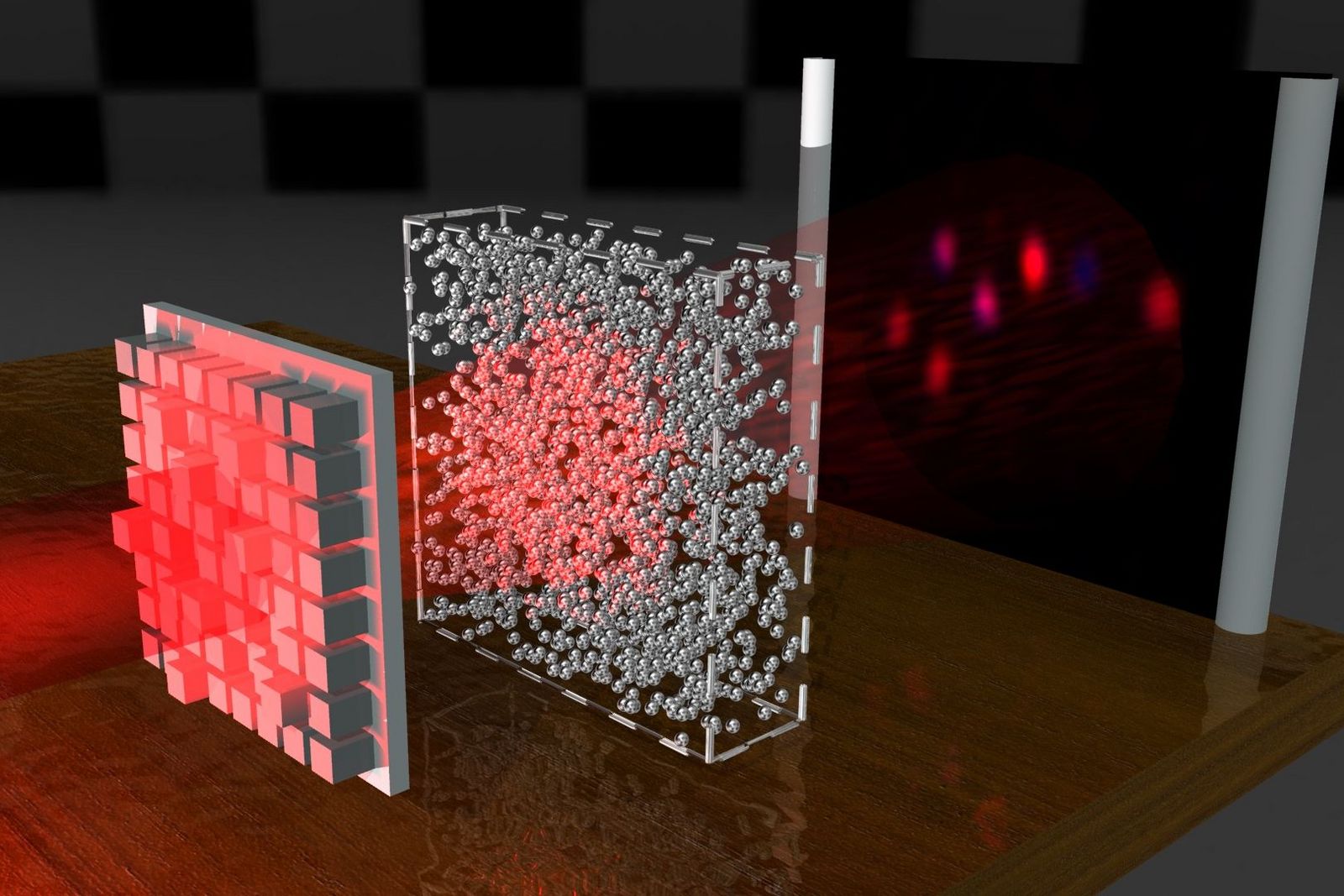Breakthrough discovery makes objects ‘invisible’ using tailor-made light beams
The research means scientists can not only look at what’s behind an object but through it

Your support helps us to tell the story
From reproductive rights to climate change to Big Tech, The Independent is on the ground when the story is developing. Whether it's investigating the financials of Elon Musk's pro-Trump PAC or producing our latest documentary, 'The A Word', which shines a light on the American women fighting for reproductive rights, we know how important it is to parse out the facts from the messaging.
At such a critical moment in US history, we need reporters on the ground. Your donation allows us to keep sending journalists to speak to both sides of the story.
The Independent is trusted by Americans across the entire political spectrum. And unlike many other quality news outlets, we choose not to lock Americans out of our reporting and analysis with paywalls. We believe quality journalism should be available to everyone, paid for by those who can afford it.
Your support makes all the difference.Scientists have found a way to make solid objects ‘invisible’ in a strange way – by having light waves pass through opaque materials as if they were not there at all.
The reason that objects are visible are because of the scattering of light waves, bouncing from a light source onto an item and then into the human eye.
However, research from TU Wien and Utrecht University have been able to calculate a specific variety of light wave that could penetrate an object. While one might think that all light waves are the same, this is not the case.
"Each of these light wave patterns is changed and deflected in a very specific way when you send it through a disordered medium," explained Professor Stefan Rotter from the Institute of Theoretical Physics at TU Wien in a statement.
The execution of this is very challenging, and precise. In an experiment Professor Rotter and Professor Allard Mosk, at Utrecht University, used a layer of opaque zinc oxide powder - randomly arranged nanoparticles – and calculated exactly how light is scattered by the powder, and how it would have been scattered if the powder was not there at all.
With this knowledge, the researchers found that a certain type of light wave (“scattering-invariant light modes”) was recorded by a detector on the other side of the powder in exactly the same pattern – albeit slightly weaker than when they were sent.
Moreover, there are a theoretically unlimited number of light waves; this means that while they are difficult to calculate, they can be found.
This new development could prove significantly beneficial to imaging procedures in biomedical applications. “One aspect we are very excited about is the fact that the light fields we introduced in our work not only seem to be special in the output field patterns they produce behind the object, but also inside of it”, Professor Rotter told The Independent.
“The feature that these fields resemble those in free space could be very useful for looking deep inside highly scattering materials that are typically very challenging to work with”.
There is still research to be done, Professor Rotter added, as biological systems are full of movement, such as blood flowing through the body. This makes it hard to calculate the patterns needed to have light pass through the object, as the measurements need to be done more rapidly than the timescale of the movement itself.
For now the breakthrough could help scientists that want to examine smaller structures, such as cells, and Professor Rotter believes that it is only a matter of time before the measurement tools become fast enough and cheaper enough to open the possibilities of more sophisticated applications.
The results have now been published in the journal Nature Photonics
Join our commenting forum
Join thought-provoking conversations, follow other Independent readers and see their replies
Comments